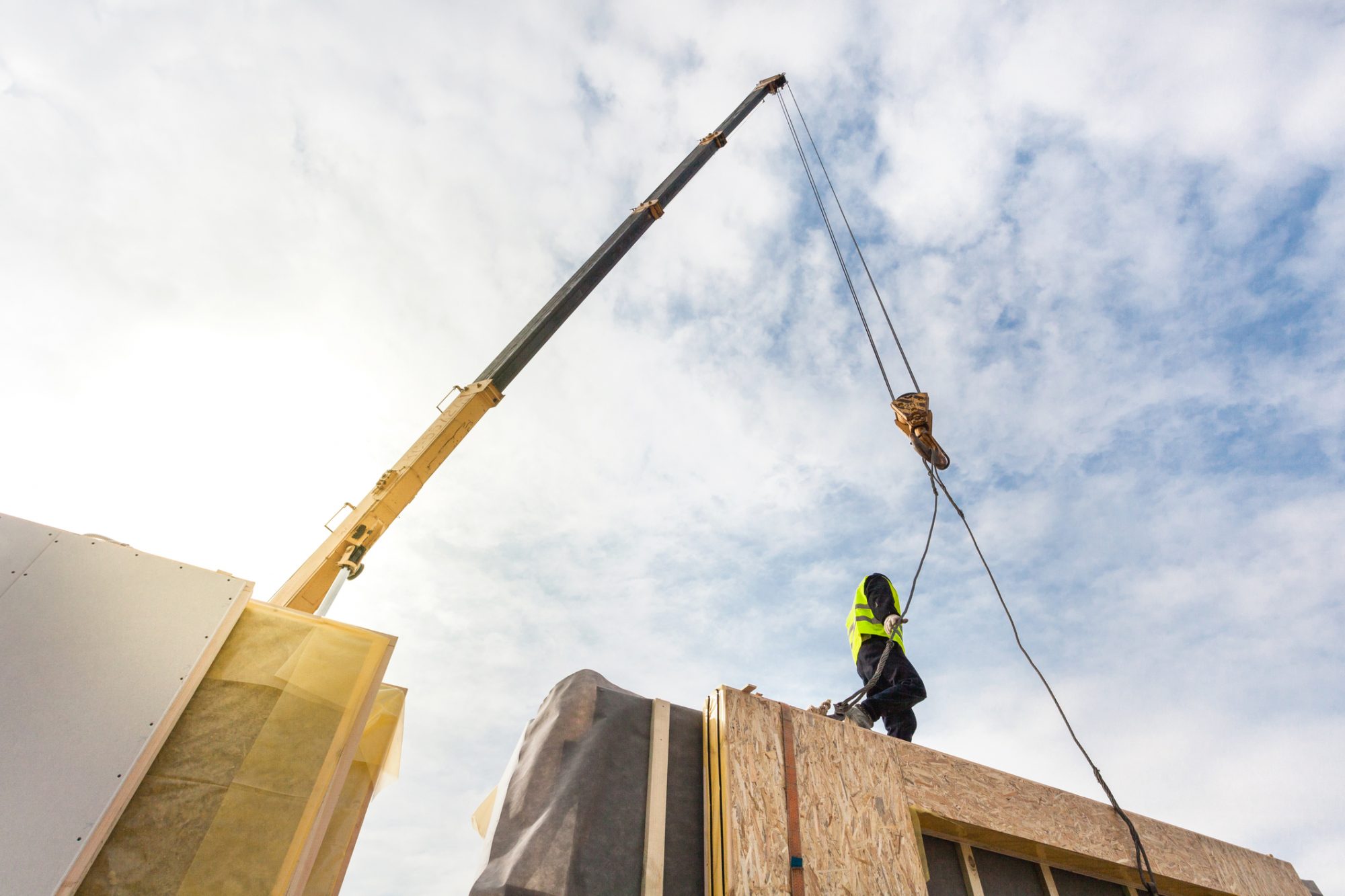Modular construction is by no means new but making modular projects mainstream brings a number of challenges. However, Mateo Zimmerman, investment manager at CEMEX Ventures, argues that the benefits make it worthwhile
There are many benefits to implementing modular construction into the mainstream. While the process does not come without its challenges, companies are well equipped to manage these obstacles with teamwork, the correct partners and drive.
Modular construction is a solution to the continuous strain of available building materials and their volatile costs. Modular refers to a method of construction where most building is done offsite and then put together on-site. Think of it like Lincoln Logs or Legos. Thanks to offsite construction, the assembly takes place in a controlled environment. Then, assembled modules are shipped and placed together on the job site.
Modular construction is not a “new fangled” idea; it has been used to advance society for hundreds of year. It may have started with the ancient Romans and is most famous in American culture during the Gold Rush, in which settlers purchased house “kits” and had them shipped by rail from east coast factories.
The market value for modular construction in new real estate construction alone could reach $130bn in Europe and the United States by 2030. As the construction sector pivots toward this building practice, what are some challenges the industry may face in the process? And how can contech start-ups navigate these challenges?
Main challenges with modular projects
Challenges associated with modular construction include a limited customisation, a more complex norm and approval process, difficulties in financing, transportation costs and risks, and a process mentality shift.
Because so much of the modular process is constructed offsite, more design and engineering decisions need to be made upfront. This means that architects, engineers and contractors must be familiar with the intricacies of modular creation and building, which is known as Design for Manufacturing and Assembly (DfMA).
While this is a process that has been done for thousands of years, it is not currently mainstream, so it may be a challenge to find architects and engineers fit for the job and understand important concepts like “design freeze” in DfMA. Similarly, financing modular projects can become difficult if customers don’t realise the working capital challenges and investors don’t understand the project well enough.
Transporting modules is also a tedious process that needs to be planned carefully and in constant coordination with the site. One disastrous mishap during transportation could possibly hold up the installation if a portion of the entire module needs repairs or to be replaced.
The approval process for modular projections can be intricate. All construction projects must meet federal, state and local codes. But these codes are subject to change based on the construction method. In the US, these building codes also vary by state and can get complicated if a module is constructed in one state, but the building site is in another.
How can companies tackle the challenges associated with modular projects?
The best way for companies to avoid getting overwhelmed and falling into the aforementioned pitfalls and challenges that come with modular construction is not to rush to do the whole process themselves. Modular construction is a team effort that requires planning and forethought at every stage.
In the past, companies have failed in their attempts at modular construction because they were trying to do too many things at once. Katerra, for example, was trying to juggle construction costs, increasing complexity from vertical (developing buildings systems for different building types) and horizontal (fabrication of all the elements and components) integration, delayed projects, and creating their own state-of-the-art mega-factories, all while struggling to convince developers and contractors to get on board with modular construction. The passion and drive are admirable but companies need to take a step back and focus on standardization (one solution at a time).

This means that modular construction start-ups, who are developing new innovative technologies, should develop strategic partnerships (instead of customer-supplier relationships) with already established companies in order to ease the workflow and focus on continuous improvement. These relationships lead to more successful partnerships and overall better products for the end consumer.
Established construction companies will be able to combine their knowledge of the industry and experienced employees with the innovations of start-ups focusing on modular construction, truly promoting a more widespread adoption of this technique.
A good example is the start-up Modulous, which has been working hand-in-hand with building materials company CEMEX to further enhance its offering regarding modular homes, and since then has been able to expand its market from the UK to USA, making possible the delivery of beautifully designed, sustainable and affordable homes at a fraction of the time and cost than with traditional construction methods.

Some 90% of construction managers and general contractors save time and money when using modular practices over conventional construction. To continue increasing this success rate in the face of obstacles, at CEMEX Ventures we call on modular companies to collaborate with conventional construction companies to produce creative ways to problem solve and mitigate risks with modular projects.
The future of modular projects
Modular construction is the future because it paves a way to more sustainable living. 40% of landfill waste comes from construction, but modular construction reduces the amount of waste generated on an equivalent traditional construction site by up to 90%. By constructing offsite, companies are better able to manage waste control in a factory setting. Module buildings are also reusable; they are multi-purposeful and are made to be deconstructed without creating demolition waste.
Over 60% of those surveyed by the Modular Building Institute agreed that there is a misperception of modular being portable one-storey buildings. The potential of modular construction is so much more than that!
According to the Census Bureau, one in 18 Americans reside in a modular building, and that number is only expected to grow, some even going as far claiming that modular construction can become “the future of real estate”.
There are many benefits to implementing modular construction into the mainstream. While the process does not come without its challenges, companies are well equipped to manage these obstacles with teamwork, the correct partners and drive.
Modular construction can build an affordable, eco-friendly and efficient mass market, and the opportunities that come with this technology for the construction industry truly outweighs all the challenges it might find along its adoption process.
Mateo Zimmerman
Investment manager
CEMEX Ventures








![[VIDEO] Making DorTrak reports easy to read with Fireco Inspecting fire doors at Fireco, firedoor technology, 2023](https://www.pbctoday.co.uk/news/wp-content/uploads/2024/04/JPZ_2364-web-218x150.jpg)
![[VIDEO] Re-flow Field Management review by Traffic Management Installations When TMI began subcontracting for councils and government bodies, they wanted to present their site reporting in a more professional manner](https://www.pbctoday.co.uk/news/wp-content/uploads/2025/03/TMI-Media-1-218x150.png)




